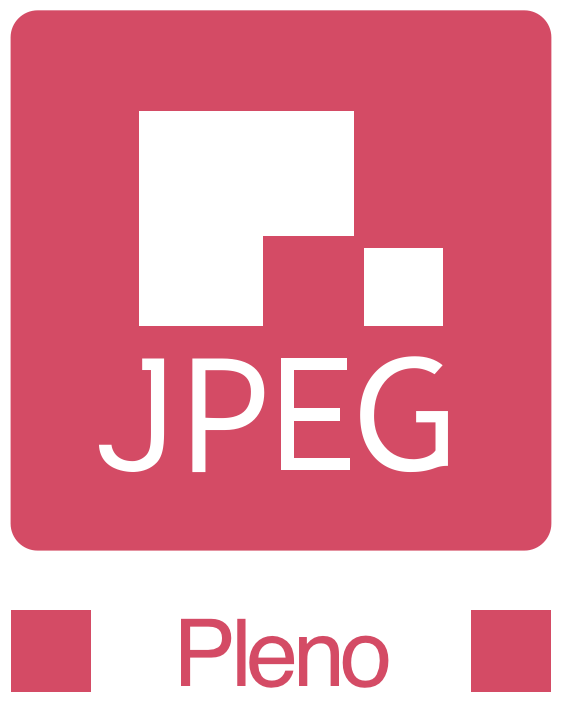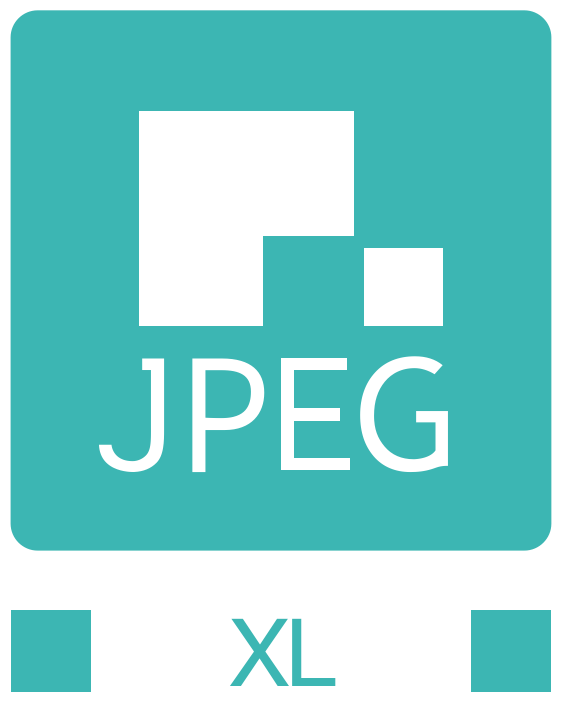Document WG1N83005
JPEG explores Artificial Intelligence for Image Coding
The 83rd JPEG meeting was held in Geneva, Switzerland. A new exploration study on the use of learning based methods applied to image coding was initiated at the previous 82nd JPEG meeting in Lisbon, Portugal. The initial approach provided very promising results and might establish a new alternative for future image representations.
Moreover, JPEG organized two successful workshops.
The first, on digital holography applications and systems, revealed the state of the art on industry applications and current technical solutions. It covered applications such as holographic microscopy, tomography, printing and display. Moreover, insights were provided on state-of-the-art holographic coding technologies and quality assessment procedures. The workshop allowed a very fruitful exchange of ideas between the different invited parties and JPEG experts.
The second workshop, the 3rd in a series organized around media blockchain technology, had several talks were academia and industry shared their views on this emerging solution. The workshop ended with a panel where multiple questions were further elaborated by different panelists, providing the ground to a better understanding of the possible role of blockchain in media technology for the near future.
Highlights of the meeting are also the progress on JPEG XL, JPEG XS, HTJ2K, JPEG Pleno and JPEG Systems. In the following a short summary of the most relevant achievements of the 83rd meeting in Geneva, Switzerland, are presented.
JPEG AI
The JPEG Committee is pleased to announce that it has started exploration studies on the use of learning-based solutions for its standards.
In the last few years, several efficient learning-based image coding solutions have been proposed, mainly with improved neural network models. These advances exploit the availability of large image datasets and special hardware, such as the highly parallelizable graphic processing units (GPUs). Recognizing that this area has received many contributions recently and is considered critical for the future of a rich multimedia ecosystem, JPEG has created the JPEG AI AhG group to study promising learning-based image codecs with a precise and well-defined quality evaluation methodology.
In this meeting, a taxonomy was proposed and available solutions from the literature were organized into different dimensions. Besides, a list of promising learning-based image compression implementations and potential datasets to be used in the future were gathered.
JPEG XL
The JPEG Committee continues to develop the JPEG XL Image Coding System, a standard for image coding that offers substantially better compression efficiency than relevant alternative image formats, along with features desirable for web distribution and efficient compression of high quality images.
Software for the JPEG XL verification model has been implemented. A series of experiments showed promising results for lossy, lossless and progressive coding. In particular, photos can be stored with significant savings in size compared to equivalent-quality JPEG files. Additionally, existing JPEG files can also be considerably reduced in size (for faster download) while retaining the ability to later reproduce the exact JPEG file. Moreover, lossless storage of images is possible with major savings in size compared to PNG. Further refinements to the software and experiments (including enhancement of existing JPEG files, and animations) will follow.
JPEG Pleno
The JPEG Committee has three activities in JPEG Pleno: Light Field, Point Cloud, and Holographic image coding. A generic box-based syntax has been defined that allows for signaling of these modalities, independently or composing a plenoptic scene represented by different modalities. The JPEG Pleno system also includes a reference grid system that supports the positioning of the respective modalities. The generic file format and reference grid system are defined in Part 1 of the standard, which is currently under development. Part 2 of the standard covers light field coding and supports two encoding mechanisms. The launch of specifications for point cloud and holographic content is under study by the JPEG committee.
JPEG XS
The JPEG committee is pleased to announce the creation of an Amendment to JPEG XS Core Coding System defining the use of the codec for raw image sensor data. The JPEG XS project aims at the standardization of a visually lossless low-latency and lightweight compression scheme that can be used as a mezzanine codec in various markets. Among the targeted use cases for raw image sensor compression, one can cite video transport over professional video links (SDI, IP, Ethernet), real-time video storage in and outside of cameras, memory buffers, machine vision systems, and data compression onboard of autonomous cars. One of the most important benefit of the JPEG XS codec is an end-to-end latency ranging from less than one line to a few lines of the image.
HTJ2K
The JPEG committee is pleased to announce a significant milestone, with ISO/IEC 15444-15 High-Throughput JPEG 2000 (HTJ2K) submitted to ISO for immediate publication as International Standard. HTJ2K opens the door to higher encoding and decoding throughput for applications where JPEG 2000 is used today.
The HTJ2K algorithm has demonstrated an average tenfold increase in encoding and decoding throughput compared to the algorithm currently defined by JPEG 2000 Part 1. This increase in throughput results in an average coding efficiency loss of 10% or less in comparison to the most efficient modes of the block coding algorithm in JPEG 2000 Part 1 and enables mathematically lossless transcoding to and from JPEG 2000 Part 1 codestreams.
JPEG Media Blockchain Technology
In order to clearly identify the impact of blockchain and distributed ledger technologies on JPEG standards, the committee has organised several workshops to interact with stakeholders in the domain. The programs and proceedings of these workshop are accessible on the JPEG website:
-
1st JPEG Workshop on Media Blockchain Proceedings, ISO/IEC JTC1/SC29/WG1, wg1n81033, Vancouver, Canada, October 16th, 2018
-
2nd JPEG Workshop on Media Blockchain Proceedings, ISO/IEC JTC1/SC29/WG1, wg1n82017, Lisbon, Portugal, January 22nd, 2019
-
3rd JPEG Workshop on Media Blockchain Proceedings, ISO/IEC JTC1/SC29/WG1, wg1n83044, Geneva, Switzerland, March 20th, 2019
A 4th workshop is planned during the 84th JPEG meeting to be held in Brussels, Belgium on July 16th, 2019. The JPEG Committee invites experts to participate to this upcoming workshop.
JPEG Systems – Privacy, Security & IPR, JPSearch, and JPEG-in-HEIF.
At the 83rd meeting, JPEG Systems realized significant progress towards improving users’ privacy with the DIS text completion of ISO/IEC 19566-4 “Privacy, Security, and IPR Features” which will be released for ballot. JPEG Systems continued to progress on image search and retrieval with the FDIS text release of JPSearch ISO/IEC 24800 Part 2- 2nd edition. Finally, support for JPEG 2000, JPEG XR, and JPEG XS images encapsulated in ISO/IEC 15444-12 are progressing towards IS stage; this enables these JPEG images to be encapsulated in ISO base media file formats, such as ISO/IEC 23008-12 High efficiency file format (HEIF).
"Intelligent codecs might redesign the future of media compression. JPEG can accelerate this trend by producing the first AI based image coding standard.” said Prof. Touradj Ebrahimi, the Convenor of the JPEG Committee.
About JPEG
The Joint Photographic Experts Group (JPEG) is a Working Group of ISO/IEC, the International Organisation for Standardization / International Electrotechnical Commission, (ISO/IEC JTC 1/SC 29/WG 1) and of the International Telecommunication Union (ITU-T SG16), responsible for the popular JPEG, JPEG 2000, JPEG XR, JPSearch, JPEG XT and more recently, the JPEG XS, JPEG Systems, JPEG Pleno and JPEG XL families of imaging standards.
The JPEG Committee nominally meets four times a year, in different world locations. The 82nd JPEG Meeting was held on 19-25 January 2018, in Lisbon, Portugal. The next 84th JPEG Meeting will be held on 13-19 July 2019, in Brussels, Belgium.
More information about JPEG and its work is available at jpeg.org or by contacting of the JPEG Communication Subgroup.
If you would like to stay posted on JPEG activities, please subscribe to the jpeg-news mailing list.
A zip package containing the official JPEG logo and logos of all JPEG standards can be downloaded here. The package includes the new JPEG Pleno and JPEG XL logos released during the Geneva meeting.


Future JPEG meetings are planned as follows:
- No 84, Brussels, Belgium, July 13 to 19, 2019
- No 85, San Jose, California, U.S.A., November 2 to 8, 2019
- No 86, Sydney, Australia, January 18 to 24, 2020
